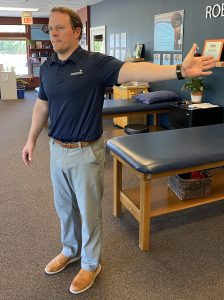During a physical therapy examination, your therapist will perform tests to rule in or rule out causes of your pain, no matter what body part is bothering you. There are dozens of neck pain special tests, but here are a few that you can perform on yourself at home.
Upper Extremity Nerve Glide
Standing up straight, place the arm to be stretched out to your side with the palm facing up. Slowly bend your wrist down towards the ground keeping the palm up. Then tilt your head away from the arm being stretched and notice any change in sensation, then tilt your head towards the side being stretched and observe any change.

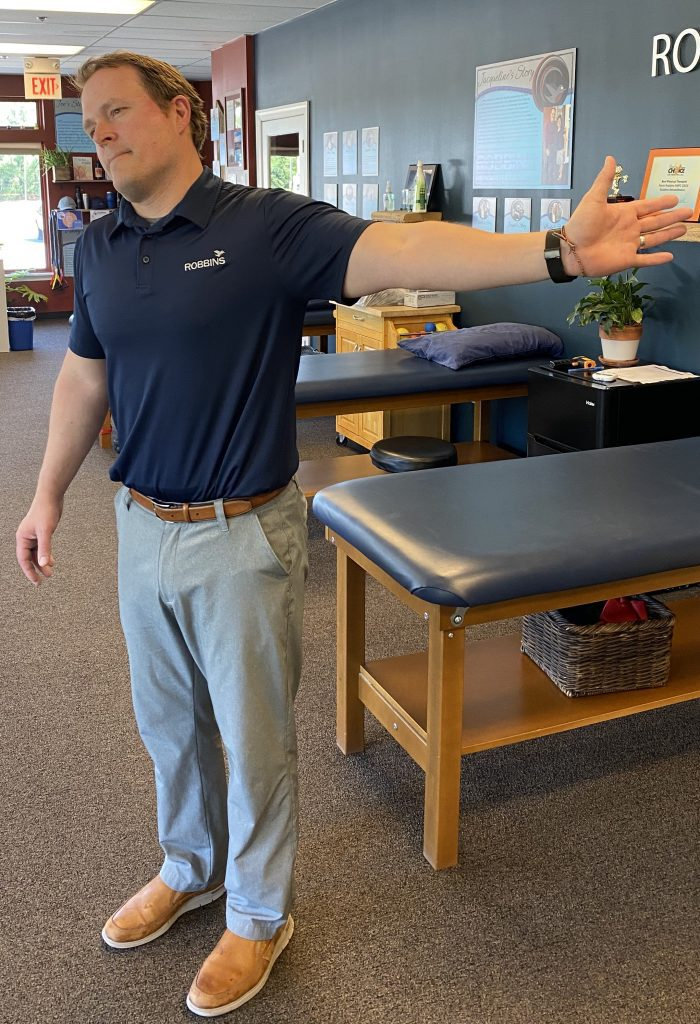
Negative test: No significant change in pulling or symptoms down the arm when moving the neck.
Positive test: If your pain or symptoms get worse when tilting the head away from the arm and better when tilting the head to the side of the outstretched arm.
What does a positive test mean?
When performing the test, if tilting the head away worsens pain and/or symptoms and tilting the head towards the arm eliminates or reduces the pain the nerve root is under excessive tension at the neck.
Chin tuck, lift, and hold
Begin the test lying flat with nothing under your head. You may bend your knees to allow the natural curve in your low back. Begin by tucking your chin and then raising the head off the floor about 1 inch maintaining the tucked position. Hold this position as long as possible without letting the chin protrude or the head to drop back to the floor. May attempt up to 3 times, taking 3 minute rests between attempts.
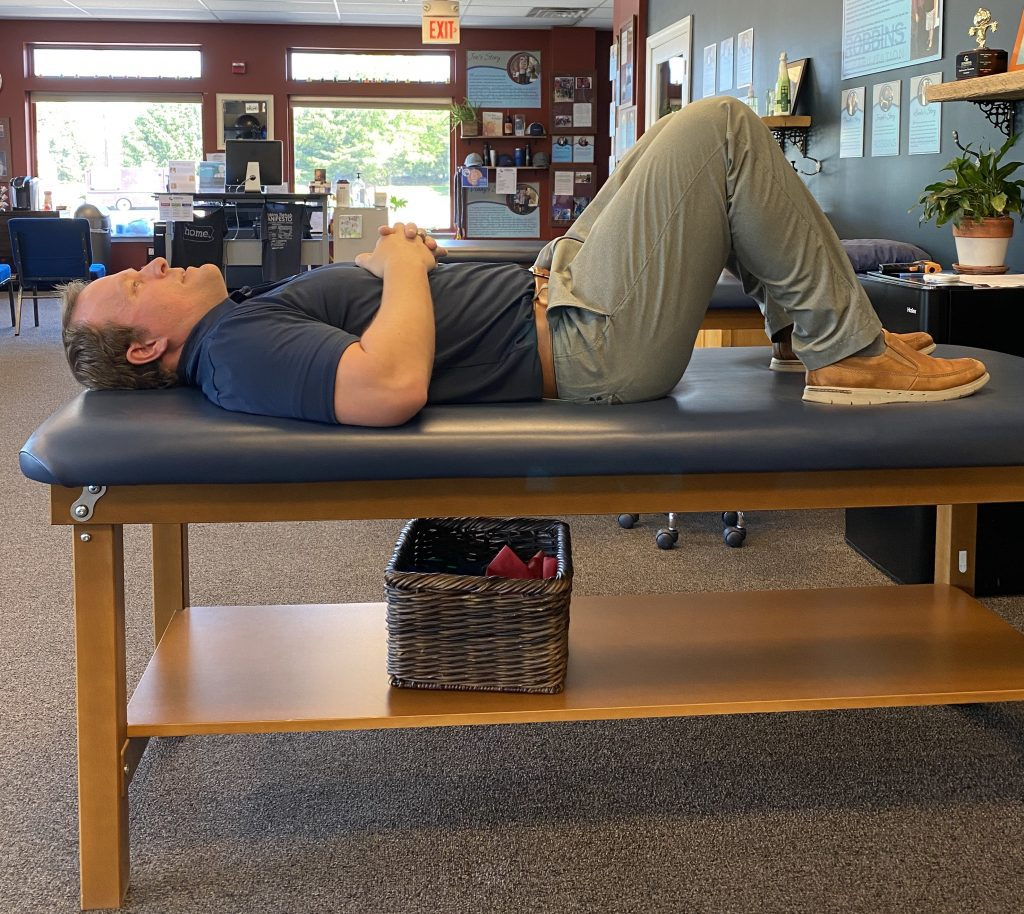
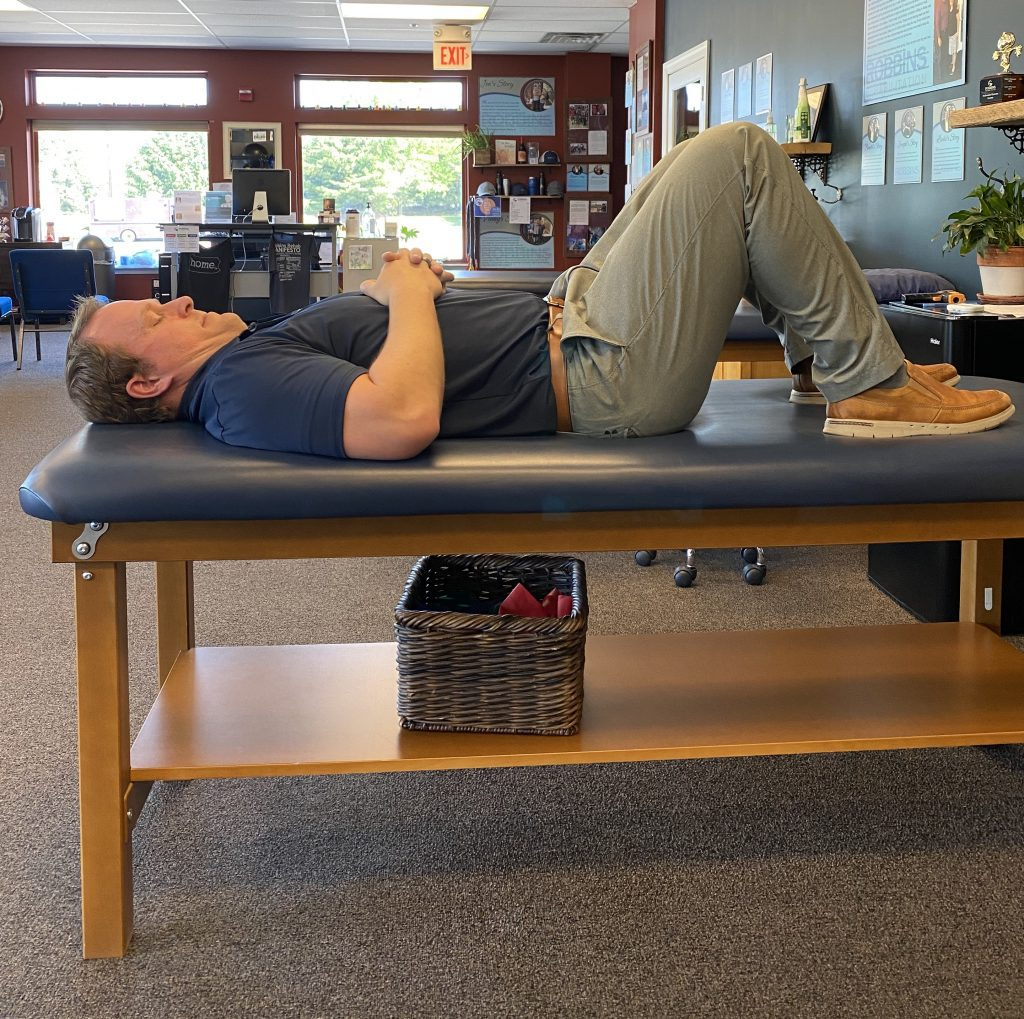
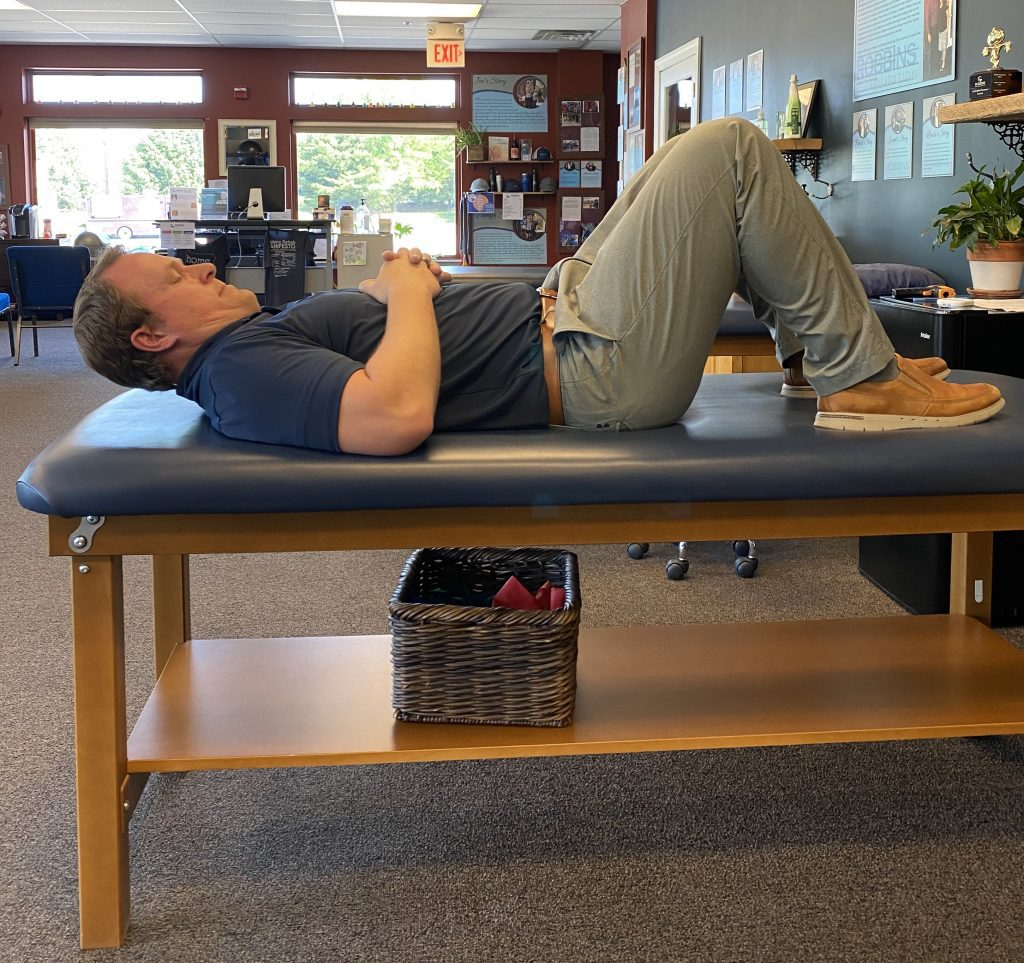
Gender Based Norms – Men: 38 sec, Women: 30 sec
Negative Test: Able to maintain proper testing position for the duration of the exercise.
Positive Test: Unable to maintain testing position for required duration or without pain.
What does a positive test mean?
A positive test here indicates weakness of the deep neck stabilizer muscles placing increased stress on the ligaments and discs in the neck and contributing to inability to maintain proper posture.
Self distraction
This test can be performed standing or sitting. With your hands feel for the two bony bumps at the back of the skull, place the base of your thumbs on these points and interlace the fingers. Gently squeeze your hands around the base of the skull and move the hands up, you may also slightly tilt the chin to your chest while you do this. Maintain for up to 30 seconds and take notice of any changes in pain or symptoms.
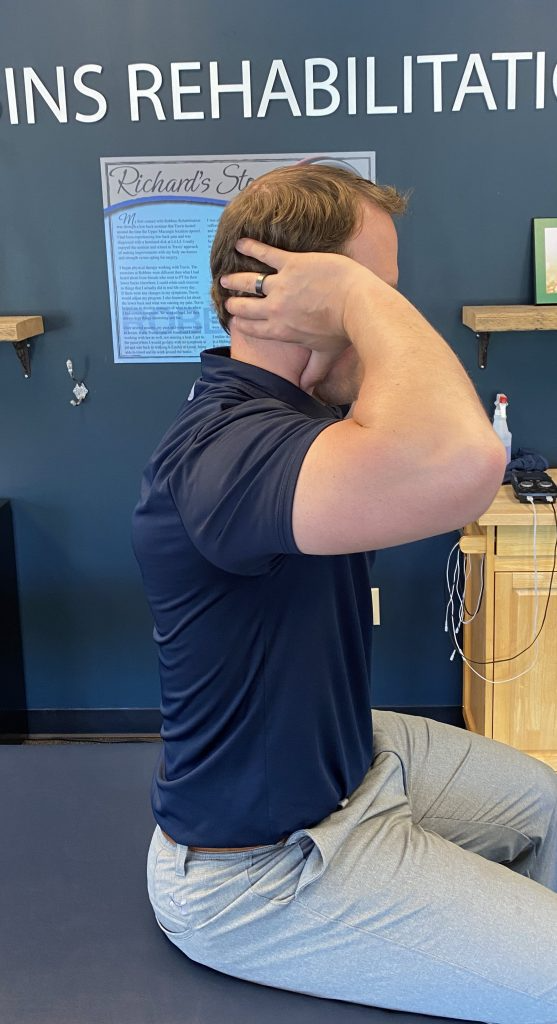
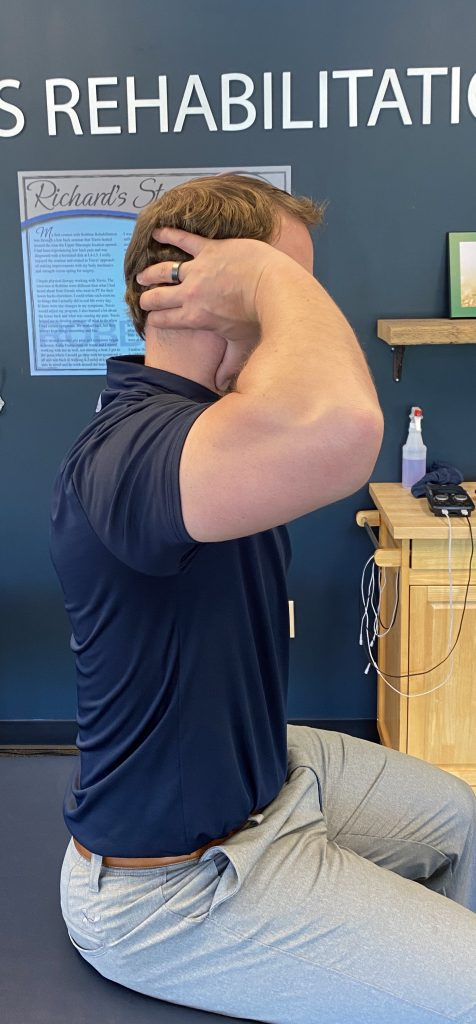
Negative test: This test is negative when lifting your head does not decrease any pain/symptoms in the neck or into the arms.
Positive test: This test is positive when lifting your head up relieves the pain or arm symptoms by at least 50%.
What does a positive test mean?
A positive test means that something is compressing the nerve roots as they run out of your neck or there may be irritation of the facet joints in the back of the neck.


